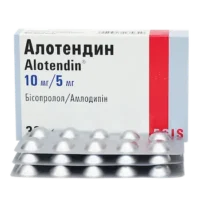Description
Trombonet (Clopidogrel) Coated Tablets 75 mg №60
Ingredients
- Active ingredient: Clopidogrel bisulfate 75 mg per tablet.
Dosage
- Recommended dosage: The usual dose is one tablet daily, taken orally with or without food, or as directed by a healthcare professional.
Indications
- Indicated for: Prevention of blood clots in individuals with a history of recent heart attack or stroke, or peripheral arterial disease.
Contraindications
- Do not use if: Allergic to clopidogrel or other ingredients in the product, have active bleeding such as peptic ulcer or intracranial hemorrhage.
Directions
- Administration: Swallow the tablet whole with water. Do not crush or chew the tablet. Follow the instructions provided by your healthcare provider.
Scientific Evidence
- Pharmacological effects: Clopidogrel is an antiplatelet medication that works by irreversibly binding to the P2Y12 receptor on platelets, inhibiting platelet aggregation and reducing the risk of blood clot formation.
- Clinical trials: Clinical studies have demonstrated the efficacy of clopidogrel in reducing the risk of cardiovascular events in patients with atherosclerosis and those who have undergone percutaneous coronary intervention.
Additional Information
- Clopidogrel is commonly prescribed in combination with aspirin for dual antiplatelet therapy following certain cardiac procedures to prevent stent thrombosis and cardiovascular events.
- It is important to inform your healthcare provider about all medications, including over-the-counter drugs and supplements, before starting clopidogrel to avoid potential drug interactions.





